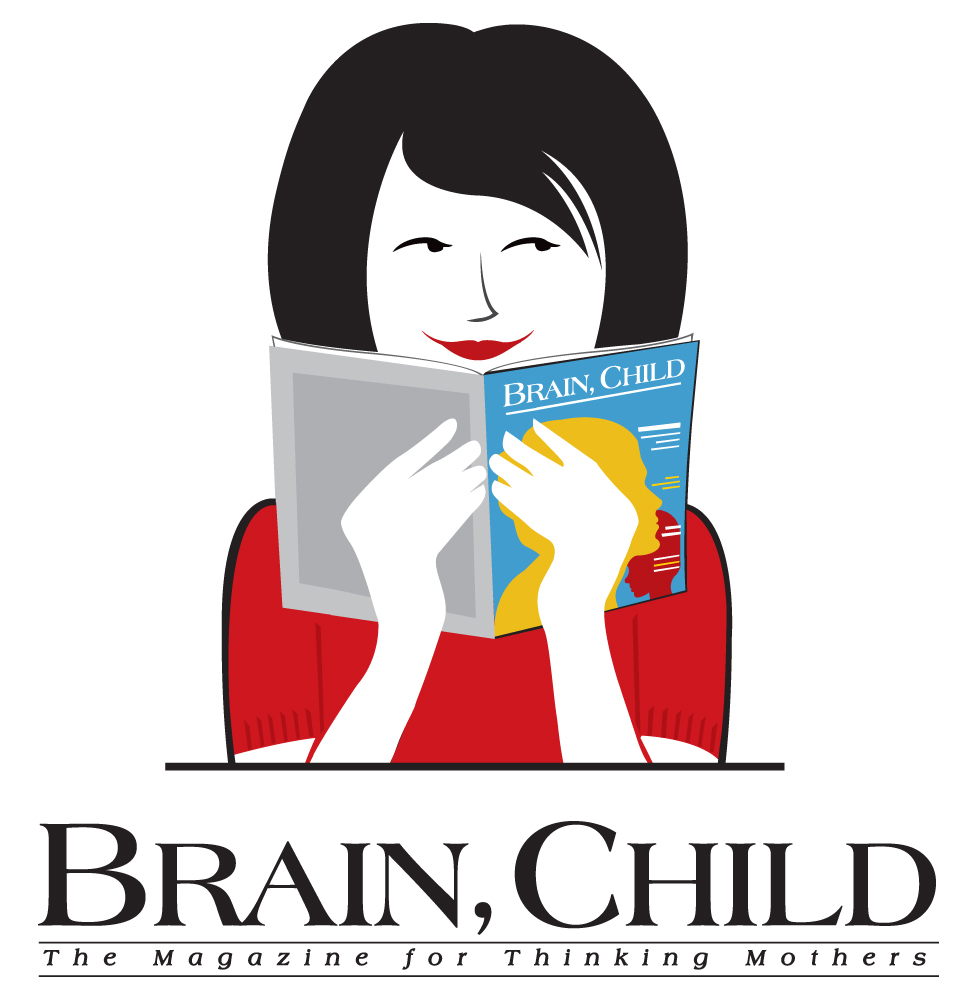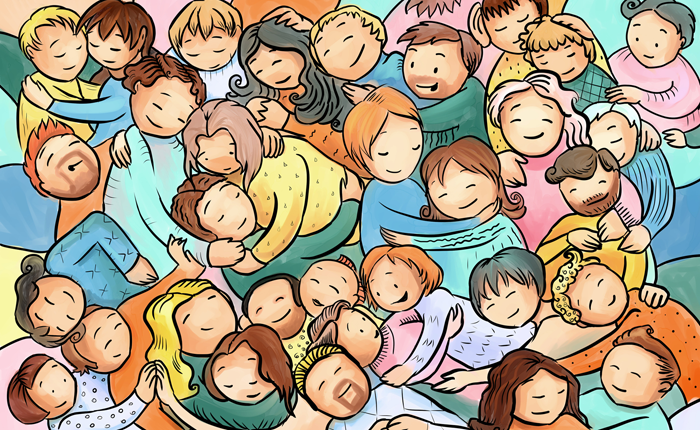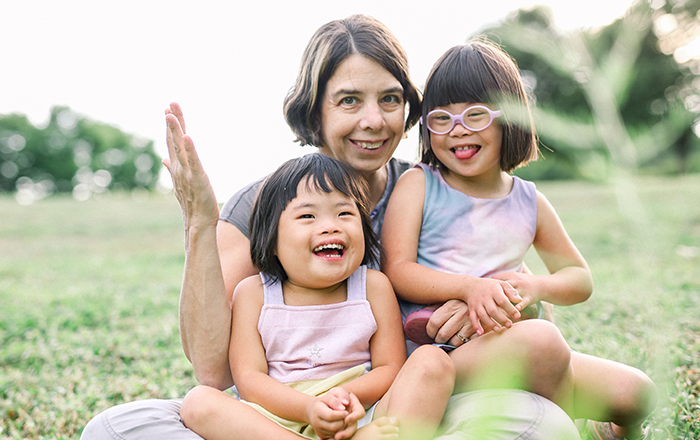The photo arrived the way many photos do these days; I was tagged on Facebook in order to see it. The dress 18-month-old Cora wore was one my daughter, Saskia, had worn and loved. I had carefully chosen it for Cora because she’s family, and because the dress had family provenance. Let me explain: Saskia’s aunt Laura made the dress. Laura is married to my husband’s brother (from their dad’s first marriage). Cora is Saskia’s cousin because her mother, Margery, is Saskia’s birth mom’s sister (from their dad’s second marriage). Following me?
In my family, many relationships come without exact names. We adopted Saskia five years ago in an open adoption, so there are many family members who “belong” to her—Cora and Margery, for example, and her birth mom, Caroline, whom Saskia calls Auntie Cece. While adoption highlighted this truth, it was already a given in my family—and maybe in yours, too. Families tend to be rich, complicated entities. Over time, they can transform from neat and tidy to somewhat overgrown—and interesting.
My parents divorced when I was in elementary school, and they both remarried. While I don’t know all of my stepparents’ relatives well, I knew some of them, and I got a beloved stepsister out of the deal. Whenever people used to ask me whether I felt sad that my parents divorced, I’d say I wasn’t. My answer was (and still is): “Without their divorce, I wouldn’t have Emily.” When Emily got married, her sister (technically, her half-sister, if you want to be technical) stayed at our house the night before the wedding. Though we made the arrangement for convenience’s sake, it felt easy and natural—after all, we were both sisters of the bride. Did that make us sisters, too? If not technically (if you want to be technical), I think it’s fair to say that we felt sisterly, especially in our shared love for Em.
During a visit to New York, my stepsister’s dad came to our hotel to see his daughter. A tall, wiry, energetic, and somewhat hammy guy, he declared to my children that, as Emily’s dad, he was “kind of another grandpa.” My kids were more than game for a fun grandparent-like addition. Had we spent more time together, I’m certain this would have become more tangible.
Is my cousin’s wife’s sister my cousin? I adore her, so surely, in a way, she is—or can be. Is my cousin’s ex-wife my cousin still? We think so. I don’t mean this in a flip and offhanded way; I guess that I think family is complicated enough that you might as well hold those you want to love alongside those you’ve been handed without a choice. Maybe this is part of why adoption didn’t seem entirely foreign to me. Some aspect of that choice felt expansive, as if we’d only embraced a different (admittedly complex) spin on that notion that you can reach toward family, that you can think outside the most simple definition about who belongs and who doesn’t.
While it’s hard to explain adoption to a five-year-old—and at times, I fear what the conversations will be with a 10- or 15-year-old—the notion that guides me is this: More love is more love. And knowing so much of her family, the ones brought via her mom—even without neat words to describe all of our relationships—feels very warm. I feel like we all have Saskia’s back. So last week when she informed me that I am not her mom, I asked what she meant. “Auntie Cece is my mom,” she said.
I heard a little hint of challenge. I took a deep breath. “Well, I’m your mom,” I said as directly and without revealing that she’d stolen my breath as I could manage. “And Auntie Cece is your mom, too.”
“I have two moms!” she exclaimed.
“That’s right,” I agreed.
More love may be more love; it’s also a lot to wrap your mind around—for her and for me. I gave her a hug and she hugged me back. I could feel her relief that she could say this; that it was fine to say and that I know I’m her mom—and want her to know that, too.
“And one dad,” she added.
That’s another story for later (we’ve never met her birth father), and so I nodded.
 This essay was first published in Brain, Child: The Magazine for Thinking Mothers. All rights reserved.
This essay was first published in Brain, Child: The Magazine for Thinking Mothers. All rights reserved.



